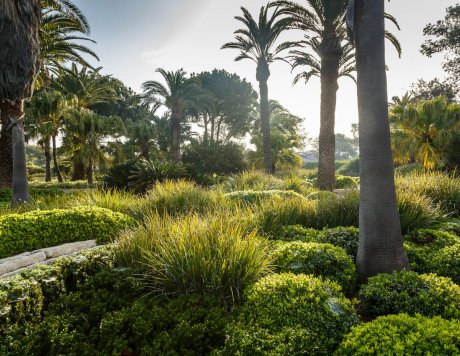Cascade Garden
Return to the main path and turn right. The curved path leads to the Cascade Garden, which acts as a window to the western landscape of the Mediterranean Sea below.
A stone relief map at the top of the steps indicates the location of forty-four settlements established or supported by the Baron. The names of several settlements recall members of the Rothschild family: Binyamina for the Baron himself, Binyamin; Zikhron Ya’acov, in memory of his father, Jacob; Meir Shefeya, in memory of his paternal grandfather, Mayer Amschel, founder of the Rothschild dynasty, together with the original Arabic name for the spot, Shafa (‘beautiful’); Bat Shlomo, in memory of his uncle and maternal grandfather, Solomon; Givat Ada, in memory of Baroness Adelaide; Pardes Hanna, in memory
of his Uncle Nathan’s daughter; Mazkeret Batya, in memory of his mother,









